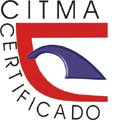Structural control of quartz veins in the Arroyo Cangre formation, Guamá river
Keywords:
veins, shear ratio, deformational period, Arroyo Cangre FormationAbstract
The Arroyo Cangre Formation located at La Faja Cangre, by the north of Pinar fault by the western Cuba, has a wide presence of quartz veins, mainly in meta-sandstone. The paper aims to characterize the veins mainly by measuring structures (veins, stratification planes and foliations). Eighty-four veins were characterized qualitatively and quantitatively by evaluating the internal structure; the relationship with stratification (longitudinal, oblique and transverse), mineralogy, thickness, type of deformation it relates to, geometric style, laying elements, box lithology, shear ratio, alteration halos and layout elements. The qualitative analysis of the veins based on their geometric-kinematic relationship and the different deformational periods that affected the area points to the fact that the longitudinal veins may be associated with the low tectonic transport of P2 as well as the transverse veins and some of the oblique ones. The other two families of oblique veins were formed at the beginning of P4 or along this, associated with extrusive orogeny and final configuration of the area.Downloads
References
Bons, P. D. (2000). The formation of veins and their microstructures. Journal of the Virtual Explorer, 02. https://doi.org/10.3809/jvirtex.2000.00007.
Bons, P. D., Elburg, M. A., & Gomez-Rivas, E. (2012). A review of the formation of tectonic veins and their microstructures. Journal of Structural Geology, 43, 33-62. https://doi.org/10.1016/j.jsg.2012.07.005.
Cáceres, D. (1997). Estructura Geológica y Pronóstico Preliminar para metales básicos + Barita en la parte central de las Alturas Pizarrosas del Sur. (Tesis doctoral, Universidad de Pinar del Río Hermanos Saiz Montes de Oca).
Cáceres, D., & Cruz-Gámez, E. M. (2022). Implicaciones tectono- metamórficas bajo una dinámica de compresión en Faja Cangre, occidente de Cuba. Revista Mexicana de Ciencias Geológicas, 39(1), 1-15. https://doi.org/10.22201/cgeo.20072902e.2022.1.1632.
Chapple, W. M. (1978). Mechanics of thin-skinned fold-and-thrust belts. Geological Society of America Bulletin, 89(8), 1189. https://doi.org/10.1130/0016-7606(1978)89<1189:MOTFB>2.0.CO;2.
Cosgrove, J. W. (1993). The interplay between fluids, folds and thrusts during the deformation of a sedimentary succession. Journal of Structural Geology, 15(3-5), 491-500. https://doi.org/10.1016/0191-8141(93)90143-X.
Cruz-Gámez, E. M., Despaigne, A. I., Lastra, J. F., & Cáceres, D. (2016). Geoquímica del magmatismo mesozoico asociado al Margen Continental Pasivo en el occidente y centro de Cuba. Boletín de la Sociedad Geológica Méxicana, 68(3). https://doi.org/10.18268/BSGM2016v68n3a5.
Durney, D. (1972). Solution-transfer, an important geological deformation mechanism. Nature, 235, 315-317.
Fisher, D., & Brantley, S. (1992). Models of quartz overgrowth and vein formation: Deformation and episodic fluid flow in an ancient subduction zone. Journal of Geophysical Research, 97, 20043-20061. https://doi.org/10.1029/92JB01582.
Fitz-Díaz, E., Tolsón, G., Camprubí, A., Rubio-Ramos, M. A., & Prol-Ledesma, R. M. (2008). Deformación, vetas, inclusiones fluidas y la evolución tectónica de las rocas cretácicas de Valle de Bravo, Estado de México, México. Revista mexicana de ciencias geológicas, 25(1), 59-81.
Fyfe, W. S., & Kerrich, R. (1985). Fluids and thrusting. Chemical Geology, 49(1-3), 353-362. https://doi.org/10.1016/0009-2541(85)90167-6.
Gamond, J. F. (1983). Displacement features associated with fault zones: A comparison between observed examples and experimental models. Journal of Structural Geology, 5, 33-45. https://doi.org/10.1016/0191-8141(83)90005-6.
Hudleston, P. J. (1989). The association of folds and veins in shear zones. Journal of Structural Geology, 11(8), 949-957. https://doi.org/10.1016/0191-8141(89)90046-1.
Jessell, M. W., Gray, D. R., & Willman, C. E. (1994). Bedding parallel veins and their relationship to folding. Journal of Structural Geology, 16(6), 753-767.
King-Hubbert, M., & Rubey, W. W. (1959). Role of fluid pressure in mechanics of overthrust faulting. Geological Society of America Bulletin, 70(2), 115. https://doi.org/10.1130/0016-7606(1959)70[115:ROFPIM]2.0.CO;2.
Martínez, D., & Férnández de Lara, R. (1988). Informe sobre los resultados del levantamiento geológico y busqueda a escala 1: 50 000 en la parte central de la provincia de Pinar del Río. Empresa de la Industria Básica. Empresa de Geología.
Millán, G. (1972). El metamorfismo y mesodeformaciones de la unidad tectónica más suroriental de la Sierra de los Órganos (Boletín Actas, pp. 33-35). Instituto de Geología y Paleontología (IGP).
Nelson, E. P. (2006). Drill-hole design for dilational ore shoot targets in fault-fill veins. Economic Geology, 101(5), 1079-1085. https://doi.org/10.2113/gsecongeo.101.5.1079.
Passchier, C. W. (2001). Flanking structures. Journal of Structural Geology, 23(6-7), 951-962. https://doi.org/10.1016/S0191-8141(00)00166-8.
Piotrowska, K. (1978). Nappe structures in the Sierra de Los Organos, western Cuba. Acta Geológica Polónica, 28, 97-170.
Pszczolkowski, A. (1985). Sobre la edad del metamorfismo y la estructura tectónica de la Faja Cangre, Provincia de Pinar del Río, Cuba. Ciencias de la Tierra y del Espacio, 31-35.
Ramsay, J. G. (1967). Folding and Fracturing of Rocks. McGraw-Hill. https://books.google.com.cu/books?id=IicUAQAAIAAJ.
Sibson, R. H., Moore, J. Mc. M., & Rankin, A. H. (1975). Seismic pumping—A hydrothermal fluid transport mechanism. Journal of the Geological Society, 131(6), 653-659. https://doi.org/10.1144/gsjgs.131.6.0653.
Yang, S. J., Kim, T., Kim, E. J., Duuring, P., Koh, S. M., Nam, H. T., Heo, C. H., Cho, S. J., & Kim, Y. S. (2022). Geometry and scale property of a gold-silver-bearing vein system associated with an oblique-slip fault zone at Gasado Island, Korea. Ore Geology Reviews, 147, 104972. https://doi.org/10.1016/j.oregeorev.2022.10497.
Published
How to Cite
Issue
Section
Copyright (c) 2024 Dayrelis Díaz Cruz, Dámaso Cáceres Govea, Elmidio Esteves Cruz

This work is licensed under a Creative Commons Attribution-NonCommercial 4.0 International License.
- Authors retain copyright and guaranteeing the right magazine to be the first publication of the work as licensed under a Creative Commons Attribution-NonCommercial that allows others to share the work with an acknowledgment of the work's authorship and initial publication in this journal.
- Authors may establish separate supplemental agreements for the exclusive distribution version of the work published in the journal (eg, place it in an institutional repository or publish it in a book), with an acknowledgment of its initial publication in this journal.
- Authors are allowed and recommended to disseminate their work through the Internet (e.g., in institutional telematic archives or on their websites) before and during the submission process, which can produce interesting exchanges and increase citations of the published work. (See The effect of open access)










